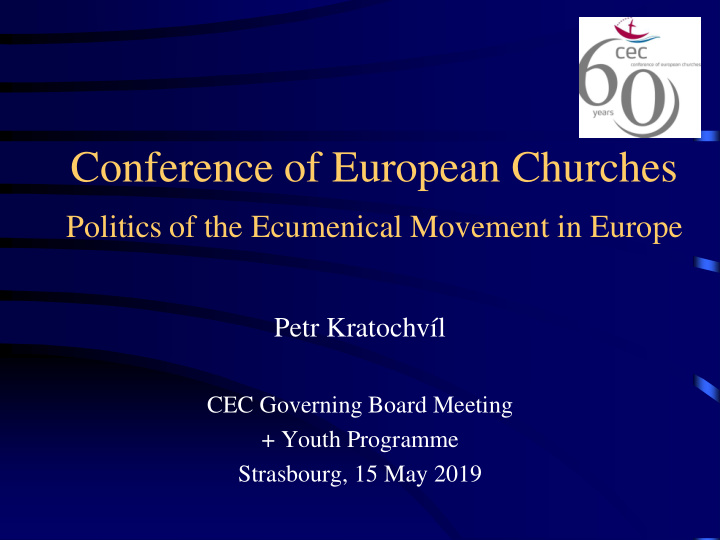



Conference of European Churches Politics of the Ecumenical Movement in Europe Petr Kratochvíl CEC Governing Board Meeting + Youth Programme Strasbourg, 15 May 2019
The Ecumenical Movement in Europe and Politics 1) Macro-level Political inspiration for the modern ecumenical movement 2) Mezzo-level Christian contribution to solving the political problems of the day 3) Micro-level Intra-institutional politics in ecumenical institutions
European Ecumenism and Politics I: The macro-level • Born in the first decades of the 20th century • Archbishop Söderblom (Life and Work): „ Reckless nationalism had to be replaced by Christian brotherhood. “ • To the Churches of Christ Everywhere: inspired by „ the hopeful establishment of the League of Nations “
European Ecumenism and Politics II: The mezzo-level • CEC founded in 1959 • Key goals as reactions to the politics of the time I. Reconciliation (50s-60s) II. East-West dialogue (60s-80s) III. Renewed European unity (90s-00s) • The main „ political “ task of today?
CEC General Assemblies • Expansion from the „neutrals“ – 1959-74: Denmark, Austria, Switzerland – 1992: Prague – 2009: Lyon – 2013: Budapest – 2018: Novi Sad
The Uppsala Report of 2012 „ The Europe of today is radically different to the one that CEC first encountered in 1959, and the pace of change continues to be relentless. Old barriers have broken down, while new divisions have begun to emerge. National boundaries have been redrawn, and the constant movement of peoples has become a dominant feature. The power of business and of new technologies has reshaped our lives. “
European Ecumenism and Politics III: The micro-level (the last slide) • Most sensitive in all institutions: Who leads? Who speaks? Who decides? Who pays? • Membership: The two largest churches in Europe are not full members
The really last slide • De-secularization: – Political action taken by the churches vs. – Political instrumentalization of religion
Slide 67 Thank you!
Recommend
More recommend